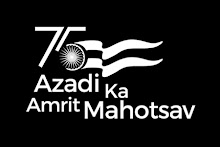With an all-seeing eye 36,000 km above the equator, the Navy has kicked off its largest exercise with both the western and eastern fleets amassing in the Bay of Bengal for combat manoeuvres.
‘Tropex’ or the theatre-level readiness and operational exercise underway across the eastern seaboard with over 50 warships, including aircraft carrier INS Viraat and N-submarine INS Chakra, as well as scores of fighters, helicopters and drones is a yearly feature.
But the novelty this year is that the month-long exercise is being held for the first time under the gaze of India’s first dedicated military satellite GSAT-7 or ‘Rukmini’, which has a 2,000-nautical mile footprint over the critical Indian Ocean Region. This geostationary naval communication and surveillance satellite, launched in August last year, is beaming signals from its UHF, S, Ku and C-band transponders to all Indian warships, submarines and aircraft with operational centres ashore through high-speed encrypted data-links.
“The exercise, with Admiral D K Joshi and Eastern Naval Command chief Vice-Admiral Anil Chopra embarked on board warships, is being conducted with two completely networked fleets widely dispersed across the IOR in a dense maritime environment,” said an officer.
Apart from IAF chipping in with its Sukhoi-30MKIs, Jaguars and IL-78 mid-air refuellers, the Navy has for the first time deployed its newly acquired P-8I long range patrol aircraft or ‘intelligent hawk eyes’ for the war games.
The US has delivered three of these eight sensor and radar-packed aircraft, contracted for $2.1 billion in 2009. Armed with anti-submarine warfare capabilities, the P-8Is are working with medium range Dorniers and Israeli Searcher-II and Heron UAVs to create a three-tier surveillance grid in the heavily-militarised IOR.
‘Tropex’ or the theatre-level readiness and operational exercise underway across the eastern seaboard with over 50 warships, including aircraft carrier INS Viraat and N-submarine INS Chakra, as well as scores of fighters, helicopters and drones is a yearly feature.
But the novelty this year is that the month-long exercise is being held for the first time under the gaze of India’s first dedicated military satellite GSAT-7 or ‘Rukmini’, which has a 2,000-nautical mile footprint over the critical Indian Ocean Region. This geostationary naval communication and surveillance satellite, launched in August last year, is beaming signals from its UHF, S, Ku and C-band transponders to all Indian warships, submarines and aircraft with operational centres ashore through high-speed encrypted data-links.
“The exercise, with Admiral D K Joshi and Eastern Naval Command chief Vice-Admiral Anil Chopra embarked on board warships, is being conducted with two completely networked fleets widely dispersed across the IOR in a dense maritime environment,” said an officer.
Apart from IAF chipping in with its Sukhoi-30MKIs, Jaguars and IL-78 mid-air refuellers, the Navy has for the first time deployed its newly acquired P-8I long range patrol aircraft or ‘intelligent hawk eyes’ for the war games.
The US has delivered three of these eight sensor and radar-packed aircraft, contracted for $2.1 billion in 2009. Armed with anti-submarine warfare capabilities, the P-8Is are working with medium range Dorniers and Israeli Searcher-II and Heron UAVs to create a three-tier surveillance grid in the heavily-militarised IOR.




No comments:
Post a Comment